|
 Secure Site
Secure Site
|
 |
Archive for March, 2010
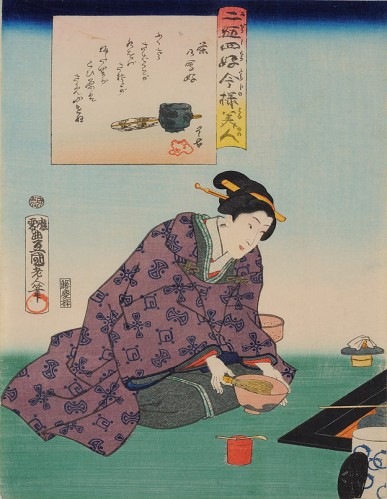 Utagawa Kunisada (1786-1865), a woman performing the tea ceremony The Japanese tea ceremony, also called the Way of Tea, is a Japanese cultural activity involving the ceremonial preparation and presentation of matcha, powdered green tea.
Many of the movements and components of tea ceremony from Japan, evolved from the wearing of kimono and, although it is not uncommon for students nowadays to wear western clothes for practice, most will practice in kimono at least some of the time, for this is essential to learn the prescribed motions properly.
wikipedia.org
 Zen Timer for tea ceremony, black laquer "E" tone digital version Now & Zen
1638 Pearl Street
Boulder, CO 80302
(800) 779-6383
Posted in Chime Alarm Clocks, Japanese Inspired Zen Clocks, Meditation Timers, Now & Zen Alarm Clocks, Tea Ceremony
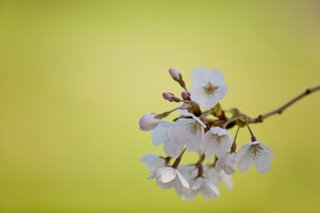 wabi sabi, the beauty of imperfection …a continuing admiration of wabi-sabi from Japan…
Wabi-sabi represents a comprehensive Japanese world view or aesthetic centered on the acceptance of transience.
Characteristics of the wabi-sabi aesthetic include asymmetry, asperity, simplicity, modesty, intimacy, and the suggestion of natural processes.
from wikipedia.org
 Zen Alarm Clock in Honey Finish Now & Zen Headquarter Store
1638 Pearl Street
Boulder, CO 80302
(800) 779-6383
Posted in Japanese Inspired Zen Clocks
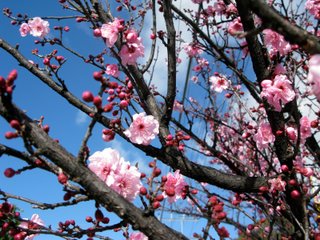 wabi-sabi: the beauty of imperfection …a continuing appreciation of wabi-sabi from Japanese culture…
The words wabi and sabi do not translate easily. Wabi connotes rustic simplicity, freshness or quietness, and can be applied to both natural and human-made objects, or understated elegance. It can also refer to quirks and anomalies arising from the process of construction, which add uniqueness and elegance to the object. Sabi is beauty or serenity that comes with age, when the life of the object and its impermanence are evidenced in its patina and wear, or in any visible repairs.
from wikipedia.org
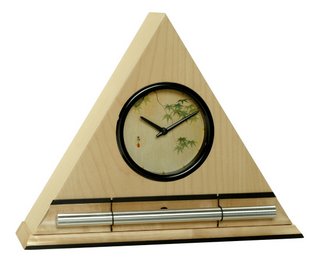 - Zen Alarm Clock in Maple Finish
Now & Zen Headquarters
1638 Pearl Street
Boulder, CO 80302
(800) 779-6383
Posted in Japanese Inspired Zen Clocks
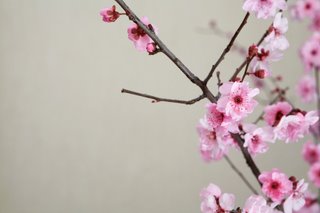 nothing lasts, nothing is finished, and nothing is perfect wabi-sabi, the art of imperfection
Wabi-sabi is the most conspicuous and characteristic feature of traditional Japanese beauty and it “occupies roughly the same position in the Japanese pantheon of aesthetic values as do the Greek ideals of beauty and perfection in the West. “
“If an object or expression can bring about, within us, a sense of serene melancholy and a spiritual longing, then that object could be said to be wabi-sabi.”
The words wabi and sabi do not translate easily. Wabi originally referred to the loneliness of living in nature, remote from society; sabi meant “chill”, “lean” or “withered”. Around the 14th century these meanings began to change, taking on more positive connotations. Wabi now connotes rustic simplicity, freshness or quietness, and can be applied to both natural and human-made objects, or understated elegance.
“It (wabi-sabi) nurtures all that is authentic by acknowledging three simple realities: nothing lasts, nothing is finished, and nothing is perfect.”
 - Maple Zen Clock
from wikipedia.org
Now & Zen Headquarters
1638 Pearl Street
Boulder, CO 80302
(800) 779-6383
Posted in Japanese Inspired Zen Clocks, wabi-sabi
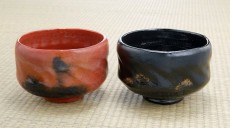 Wabi-Sabi red and black glazed Raku tea cup set ….more musings on wabi-sabi
In one sense wabi sabi is a training where the student of wabi sabi learns to find the most simple objects interesting, fascinating and beautiful. Fading autumn leaves would be an example.
Wabi sabi can change our perception of our world to the extent that a chip or crack in a vase makes it more interesting and give the object greater meditative value. Similarly materials that age such as bare wood, paper and fabric become more interesting as they exhibit changes that can be observed over time.
The wabi and sabi concepts are religious in origin, but actual usage of the words in Japanese is often quite casual.
from Wikipedia
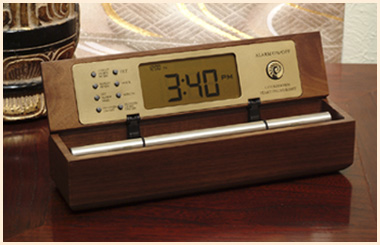 Digital Zen Alarm Clock
Now & Zen
1638 Pearl Street
Boulder, CO 80302
(800) 779-6383
Posted in Japanese Inspired Zen Clocks, Meditation Timers, Meditation Tools, Natural Awakening, Now & Zen Alarm Clocks, Yoga Timers by Now & Zen
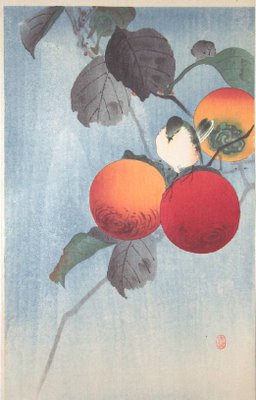 Koson's Nutcraker Atop a Persimmon, Ukiyo-e Gallery
Wabi- sabi, the art and practice of honoring the imperfect
Many Japanese arts over the past thousand years have been influenced by Zen and Mahayana philosophy, particularly acceptance and contemplation of the imperfection, constant flux, and impermanence of all things. Such arts can exemplify a wabi-sabi aesthetic.
Here is an incomplete list:
- honkyoku (traditional shakuhachi music of wandering Zen monks)
- ikebana (flower arrangement)
- Japanese gardens, Zen gardens, and bonsai (tray gardens)
- Japanese poetry, particularly haiku
- Japanese pottery, notably Hagi ware
- Japanese tea ceremony
- Bonsai the Japanese art of miniature trees
from wikipedia.org
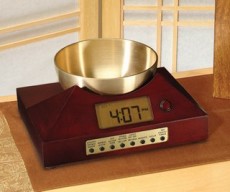 Zen Timepiece with brass bowl
Posted in Japanese Inspired Zen Clocks, Now & Zen Alarm Clocks, wabi-sabi
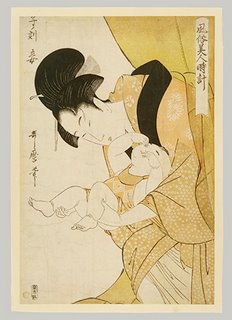 Mother and Child Ukiyoe Woodblock Print from Japan Here at Now & Zen we love to look at the old woodblock prints produced during the Japanese Genre of Ukiyo-e or also known as, ‘The Floating World’. Below is a description (From Wikipedia, the free encyclopedia):
Ukiyo-e (“pictures of the floating world”) is a genre of Japanese woodblock prints (or woodcuts) and paintings produced between the 17th and the 20th centuries, featuring motifs of landscapes, tales from history, the theatre, and pleasure quarters. It is the main artistic genre of woodblock printing in Japan.
Usually the word ukiyo is literally translated as “floating world” in English, referring to a conception of an evanescent world, impermanent, fleeting beauty and a realm of entertainments (kubuki, courtesans, geisha) divorced from the responsibilities of the mundane, everyday world; “pictures of the floating world”, i.e. ukiyo-e, are considered a genre unto themselves.
The contemporary novelist Asai, in his Ukiyo monogatari ( “Tales of the Floating World”, c. 1661), provides some insight into the concept of the floating world:
“… Living only for the moment, turning our full attention to the pleasures of the moon, the snow, the cherry blossoms and the maple leaves; singing songs, drinking wine, diverting ourselves in just floating, floating; … refusing to be disheartened, like a gourd floating along with the river current: this is what we call the floating world…”
 Zen Clock with Chime Inspired by Ukiyoe Prints and Ink Painting techniques from Japan Now & Zen Store
1638 Pearl Street
Boulder, CO 80302
Posted in Japanese Inspired Zen Clocks, Now & Zen Alarm Clocks
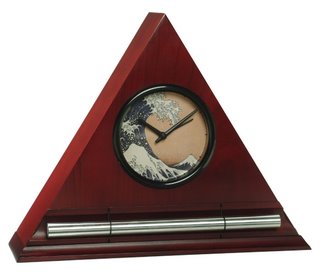 Hokusai Wave Zen Alarm Clock by Now & Zen, Boulder, CO Now & Zen’s first Zen Alarm Clock dial face was inspired by the great Japanese printmaker, Hokusai. Steve McIntosh’s love of ukiyo-e lead him to the print by Hokusai called, ‘The Great Wave off Kanagawa’.
Katsushika Hokusai was a Japanese artist, ukiyo-e painter and printmaker of the Edo period. In his time, he was Japan’s leading expert on Chinese painting. Born in Edo (now Tokyo), Hokusai is best-known as author of the woodblock print series Thirty-six Views of Mount Fuji which includes the iconic and internationally recognized print,The Great Wave off Kanagawa, created during the 1820s.
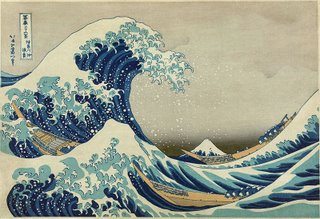 The Great Wave off Kanagawa by Hokusai Ukiyo-e, as practiced by artists like Hokusai, focused on images of the courtesans and Kabuki actors who were popular in Japan’s cities at the time.
Hokusai eventually changed the subjects of his works, moving away from the images of courtesans and actors that were the traditional subjects of ukiyo-e. Instead, his work became focused on landscapes and images of the daily life of Japanese people from a variety of social levels.
Hokusai had a long career, but he produced most of his important work after age 60. His most popular work is the ukiyo-e series Thirty-six Views of Mount Fuji, which was created between 1826 and 1833. It actually consists of 46 prints (10 of them added after publication). In addition, he is responsible for the 1834 One Hundred Views of Mount Fuji ) a work which “is generally considered the masterpiece among his landscape picture books.”
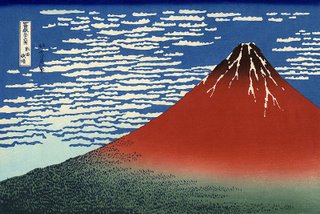 Red Fuji Ukiyo-e Print by Hokusai's series: Thirty-six Views of Mount Fuji Mount Fuji has traditionally been linked with eternal life.
His influences also stretched to his contemporaries in nineteenth century Europe whose new style Art Nouveau, or Jugendstil in Germany, was influenced by him and by Japanese art in general. This was also part of the larger Impressionist movement, with similar themes to Hokusai appearing inClaude Monet and Pierre-Auguste Renoir.
 Steve McIntosh, Founder of Now & Zen, Boulder, CO All Now & Zen products have been conceived and designed by Steve McIntosh. Steve’s love of beauty and passion for spiritual practice led him to found Now & Zen with the goal of creating products that would make a real difference in people’s lives. Steve created Now & Zen’s brand aesthetic by combining the harmonic proportions of sacred geometry with motifs from traditional Japanese culture. This has resulted in product designs that have a timeless, universal appeal.
Now & Zen Headquarter Store
1638 Pearl Street
Boulder, CO 80302
Posted in Beauty, Hokusai Wave, Japanese Inspired Zen Clocks, Now & Zen Alarm Clocks
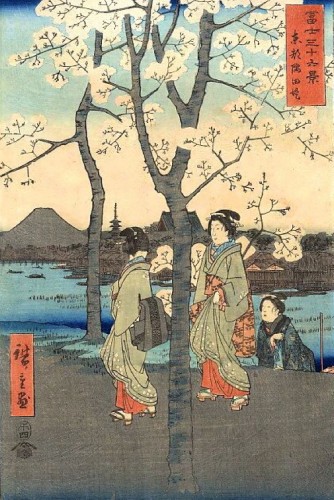 Flower Viewing- Woodblock print of Mount Fuji and cherry blossom from 36 Views of Mount Fuji by Hiroshige. Spring in Boulder, Colorado – Time for a ‘Flower-viewing’ Party!
Here at Now & Zen one of our favorite ways to relax is to view the Cherry Blossoms in Japan. Of course, it is not possible to travel so far away very often, so we try to take a moment to enjoy flowering trees and flowers each day during the spring-time in Boulder, Colorado.
Here is a brief description of the origins of the “Flower viewing” tradition in Japan:
Hanami (“flower viewing”) is the Japanese traditional custom of enjoying the beauty of flowers, “flower” in this case almost always meaning cherry blossoms, or ume blossoms. From mid January to early May, sakura bloom all over Japan. The blossom forecast is announced each year by the weather bureau, and is watched carefully by those planning hanami as the blossoms only last a week or two. In modern-day Japan, hanami mostly consists of having an outdoor party beneath the sakura during daytime or at night. Hanami at night is called yozakura.
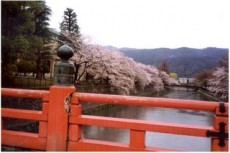 Flower Viewing- Cherry Blossoms in Kyoto During the Heian Period (794–1191), Japanese sought to emulate many practices from China, including the social phenomenon of flower viewing where the imperial households, poets, singers and other aristocrats would gather and celebrate under the blossoms. In Japan, cherry trees were planted and cultivated for their beauty, for the adornment of the grounds of the nobility of Kyoto, at least as early as 794. In China, the ume “plum” tree (actually a species of apricot) was held in highest regard, but by the middle of the ninth century, the cherry blossom had replaced the plum as the favored species in Japan.
 Flower Viewing- Sakura spring blossoms Emperor Saga of the Heian Period adopted this practice, and held Flower viewing parties with sake and feasts underneath the blossoming boughs of sakura trees in the Imperial Court in Kyoto. Poems would be written praising the delicate flowers, which were seen as a metaphor for life itself, luminous and beautiful yet fleeting and ephemeral. This was said to be the origin of hanami in Japan.
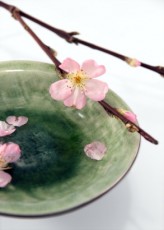 Flower Viewing- Cherry Blossoms Hanami festivals celebrate the beauty of the cherry blossom and for many are a chance to relax and enjoy the beautiful view.
Now & Zen Headquarter Store
1638 Pearl Street
Boulder, CO 80302
(800) 779-6383
Posted in Beauty, Japanese Inspired Zen Clocks, Now & Zen Alarm Clocks
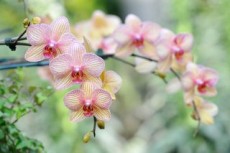 Elegant orchids in blossom
Our favorite Zen spiritual practice is flower arranging. As Buddhist monk Thich Nhat Hanh says of this beauty practice, “As you arrange the flowers, so too will you be arranged. And as you are arranged, so will your family be arranged. And as your family is arranged, so will the world be arranged.”
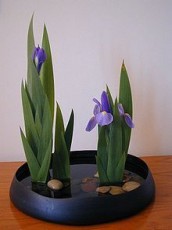 Ikebana Here’s a description of “the way of flowers.”
Ikebana is the Japanese Art of flower arrangement, also known askadō , the “way of flowers”). More than simply putting flowers in a container, ikebana is a disciplined art form in which nature and humanity are brought together.
Contrary to the idea of floral arrangement as a collection of particolored or multicolored arrangement of blooms, ikebana often emphasizes other areas of the plant, such as its stems and leaves, and draws emphasis toward shape, line and form.
 Ikebana Though ikebana is a creative expression, it has certain rules governing its form. The main rule is that all the elements used in construction must be organic, be they branches, leaves, grasses, or flowers. The artist’s intention behind each arrangement is shown through a piece’s color combinations, natural shapes, graceful lines, and the usually implied meaning of the arrangement.
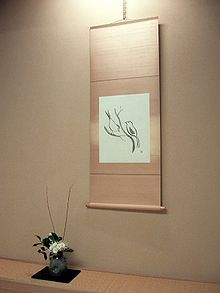
Another aspect present in ikebana is its employment of minimalism. That is, an arrangement may consist of only a minimal number of blooms interspersed among stalks and leaves.
The structure of a Japanese flower arrangement is based on a scalene triangle delineated by three main points, usually twigs, considered in some schools to symbolize heaven, earth and man and in others sun, moon, love, and earth.
The container is a key element of the composition, and various styles of pottery may be used in their construction.
Visit Now & Zen’s Headquarter Store, 1638 Pearl Street, Boulder, CO 80302 (800)779-6383
Posted in Japanese Inspired Zen Clocks, Now & Zen Alarm Clocks
« Previous Page — « Previous Entries
Next Entries » — Next Page »
|
|
|
|